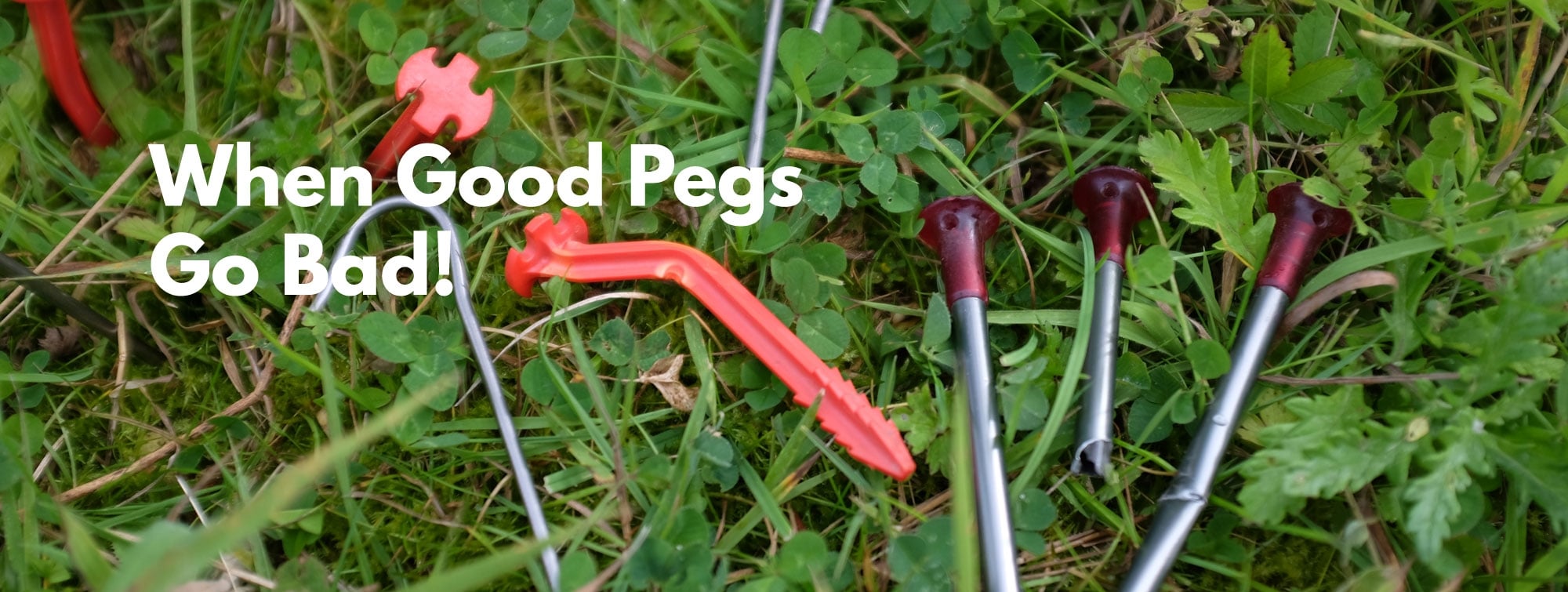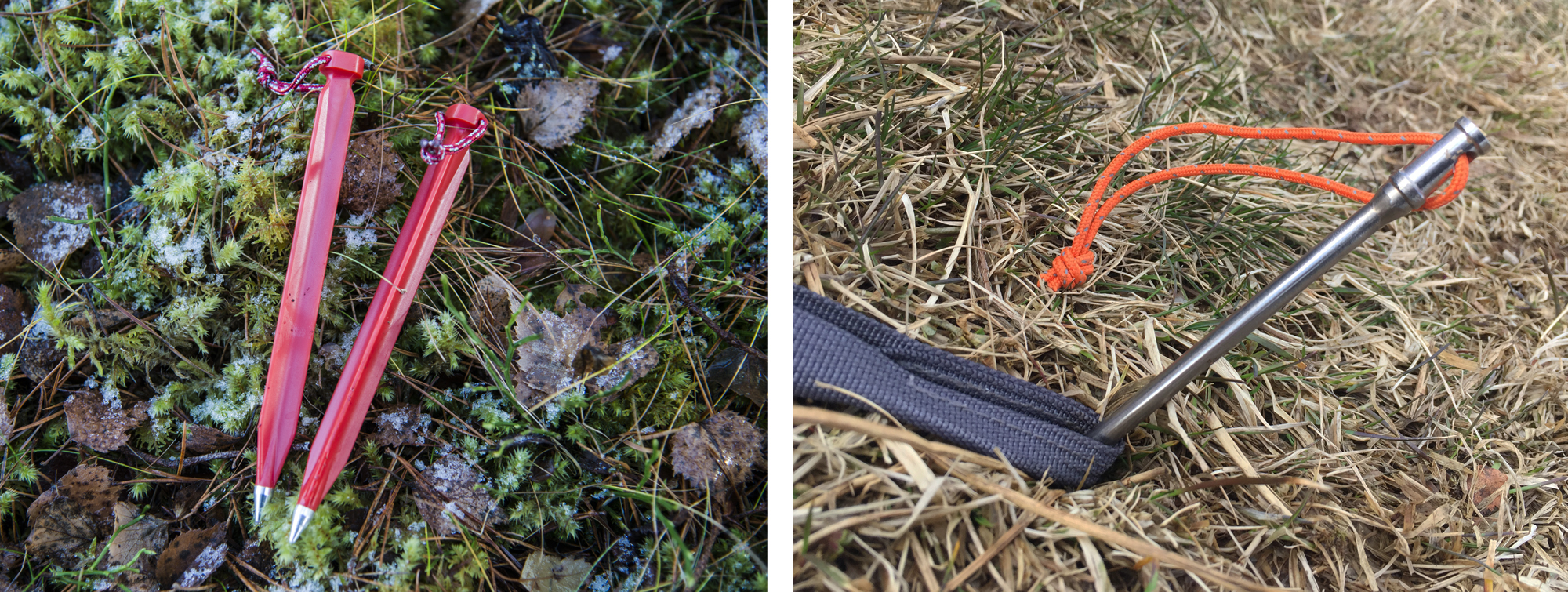When pegs go bad - Everything you need to know about tent pegs
Posted by Mark Richardson on Sep 11, 2017

My tent pegs went from new to mangled in ten days, so some thoughts are in order, and if you've ever wondered which pegs and how many to take on your trip then read on.
In the beginning...
Most people start with the pegs they are given when they buy a tent, invariably though they err on the heavy side and there aren’t enough. Manufacturers typically supply the minimum number of pegs to pitch the tent, which is without the additional guylines required in windy conditions. They provide decent quality pegs that are usually aluminium and provide good hold in soft, stable ground.
One exception is Terra Nova - who provide extremely lightweight titanium 'pin' pegs for their lightest backpacking tents, these work in ideal conditions but are not adequate for multi-day treks when the chances are those ideal conditions won't exist.
If you've bought a tent that weighs less than a kilogram though, you don't want to cart around 200g worth of pegs unless you really need them. A blend of heavier (relatively) and lighter weight pegs will get you the lightest 'rack' consistent with the conditions you will encounter.
The pegs in the picture may not look pretty but they were still holding my tent up.
How many pegs?
I usually take enough for each pegging point on the tent then one more for each storm guy attachment point there is, then I add 2. So, for the trip that features those pegs above I was carrying a Nemo Hornet 1P which requires 6 pegs for the basic setup, but it has three loops for storm guys and I wanted to add a double guy to the rear one so that I could stabilise the main pole. That's 10 pegs plus my two spares equals 12 in total.
The total weight of my twelve was 60g, and I thought I had a decent range offering a lot of flexibility.
What type of pegs?
The Corners
I find a titanium skewer to be the best option for pegging out the corners, they are light and thin, and provide good hold, on stony ground though they can be difficult to get all the way in leaving the corners of the tent able to move around - shorter pegs than the ones I took could be used quite easily here.
Flysheet pegging loops
When there are pegging points in the middle of a flysheet edge, these pegging points are usually more to stop the flysheet flapping or provide more volume to the tent, they are not often expected to be key holding points. This is where I use the lightest pegs, in the case of the Hornet there are two such points although one is the doorway, I therefore chose Piranha RT90 pegs, at 3g each there’s very little lighter.
The RT90s also doubled as an alternative for the tent corners, on a couple of occasions I couldn't get the skewers all the way in, the RT90s gave a better hold for the shallower penetration.
I was happier to put a bigger peg in the doorway as this needs to be easy to get in and out of.

Storm Guys
I need my heaviest pegs for these, and I went for MSR Carbon Core pegs which are virtually unbreakable - as you can see - these only weigh 6g each compared with perhaps double that for other pegs of this size... and size does matter, because size represents holding power, especially in softer ground.
The Environment
That may be my recommended twelve pegs, but that's for decent ground, the reason my peg set came back in such poor shape is that I failed to recognise the stony ground I'd be camping on some nights.
That didn't stop me trying to drive the pegs through solid rock though, that's what resulted in the damage - in the case of the RT90s I thought they were still going in, but in fact I was comprehensively crushing them.
On rocky ground you hit the pegs harder in the hope that they can be driven through a gap between rocks underground resulting in a super hold, if you are simply hammering them into solid rock though the result is predictable. Pegs that can resist mistreatment more than others would be Titanium nail pegs for example, Vargo do one that are just 9g each.
So, if I was travelling to a route where this might be a problem I would definitely include a few nail pegs or similar, perhaps instead of the Carbon Cores. The GR20 on Corsica is a particular case in point.
Another solution for rocky ground that should be mentioned is not to use pegs at all, tying guy lines to rocks and trees is often better than relying on a dodgy peg placement, I pitched the Hornet in this way when the ground was really unforgiving.
Soft ground can be just as problematical, I’ve seen a few tents lifted into the air by strong winds after being pegged out using pegs that were too thin for the ground. I was trying to sleep in one once, the ground was slightly boggy and my thin pegs were just not holding and the tent was collapsing around me - luckily on that occasion there were lots of thick twigs lying on the ground having been blown off a nearby tree and I ended up pegging the tent out with those - holding power was much better.
So again, if I knew what to expect I would take some high surface area pegs for boggy ground which will give me the best holding power.
Sand and Snow are particular environments that are catered for by specialist pegs, a 'peg' for these environments needs a large surface area so they can be quite heavy, however lighter solutions involve burying a flat 'spade' or filling a pouch with sand.
Simple Rules
1. Work out the minimum required for your tent, add enough for storm guys then add two spares
2. You need smallish pegs for the corners and your least effective for random flysheet pegging points
3. Take the largest pegs for the storm guys, and an easy to use one for the doorway.
4. Research your environment and swap out 'standard pegs' for those that will work well where you're going
